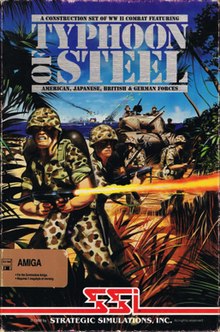.mw-parser-output .hidden-begin{box-sizing:border-box;width:100%;padding:5px;border:none;font-size:95%}.mw-parser-output .hidden-title{font-weight:bold;line-height:1.6;text-align:left}.mw-parser-output .hidden-content{text-align:left}You can help expand this article with text translated from
the corresponding article in French. (October 2020) Click [show] for important translation instructions.
View a machine-translated version of the French article.
Machine translation, like
DeepL or
Google Translate, is a useful starting point for translations, but translators must revise errors as necessary and confirm that the translation is accurate, rather than simply copy-pasting machine-translated text into the English Wikipedia.
Consider
adding a topic to this template: there are already 6,019 articles in the
main category, and specifying|topic= will aid in categorization.
Do not translate text that appears unreliable or low-quality. If possible, verify the text with references provided in the foreign-language article.
You must provide
copyright attribution in the
edit summary accompanying your translation by providing an
interlanguage link to the source of your translation. A model attribution edit summary is Content in this edit is translated from the existing French Wikipedia article at [[:fr:Typhoon of Steel]]; see its history for attribution.
You should also add the template ((Translated|fr|Typhoon of Steel)) to the
talk page.
For more guidance, see
Wikipedia:Translation.
1988 video game
Typhoon of Steel is a 1988 computer wargame designed by Gary Grigsby and published by Strategic Simulations Inc. (SSI) for the Apple II, Commodore 64, Amiga, and IBM PC. A follow-up to Grigsby's 1987 game Panzer Strike, it simulates military conflict during World War II.
In 1989, Typhoon of Steel was followed by Overrun!, which features an updated version of its engine and mechanics. It simulated hypothetical conflicts in Europe and the Middle East during the Cold War.
Gameplay
Typhoon of Steel is a computer wargame that simulates military conflict during World War II, covering combat scenarios in the Asiatic-Pacific Theater and European Theatre. Alongside its pre-made scenarios, it features an editor that allows players to create hypothetical battles.[1] Typhoon of Steel contains a "Banzai" rule to impact games that become imbalanced.[2]
Development
Typhoon of Steel was designed by Gary Grigsby and published by Strategic Simulations Inc. (SSI).[3] A sequel to Grigsby's game Panzer Strike,[4][1] it reuses that project's game engine and mechanics,[5] updated to focus on different sections of World War II. This design reuse followed a common trend for SSI titles at the time: the game systems of successful titles were often reused in subsequent products.[4] Like its predecessor, Typhoon of Steel debuted in 1988.[6]
Reception
Reception
Review scores| Publication | Score |
|---|
| Zzap! | 78%[7] |
| Computer Play | 8.15/10[4] |
M. Evan Brooks reviewed the game for Computer Gaming World, and stated that "for the dedicated gamer, Typhoon of Steel offers an engaging, albeit time-consuming, study of small unit actions during World War II in the South Pacific."[8]
In Computer Play, Russ Ceccola offered Typhoon of Steel a positive review and recommended it to "the serious war gamer".[4] Computer Gaming World nominated Typhoon of Steel for its "Wargame of the Year" award, which ultimately went to Battles of Napoleon.[9]
Reviewing the Amiga version, George Campbell of Strategy Plus dubbed Typhoon of Steel "an excellent game".[10] Zzap!'s reviewer considered the game flawed, but noted that it contained "a lot of worthwhile detail" and "plenty of ambition".[7]
Legacy
Typhoon of Steel was followed by Overrun!, which reused the game's mechanics and engine, updated to focus on modern warfare scenarios.[5]
In 1996, Computer Gaming World declared Typhoon of Steel the 143rd-best computer game ever released.[2]
